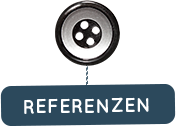
Gestalten und Erzeugen ist unser Geschäft!
Kreativität und Tradition - Müller Knöpfe Produktions GmbH
Als Familienbetrieb mit rund 20 Mitarbeitern beliefern wir die Bekleidungsbranche und andere Modeunternehmen mit Knöpfen, Schnallen und dekorativen Accessoires. Wir können Sie in allen Fragen rund um Knöpfe, Zierteile, Schnallen und Schmuckteile schnell und kompetent beraten. Rund die Hälfte unserer Lieferungen geht in das meist europäische Ausland. Stammkunden aus der Bekleidungsindustrie und dem Schmuckbereich werden genauso beliefert wie neue Labels.
Unsere Stärke ist das umfangreiche Angebot an Produkten in allen gängigen Materialien und die flexible Eigenproduktion. Wir liefern ab Lager bei einer Mindestbestellmenge von € 45, die Produktion startet bei 300 Stück. Individualisierte Anfertigungen werden oft schon ab 500 oder 1000 Stk. gemacht.
Größtes Augenmerk legen wir auf schöne und absolut zuverlässige Qualität und eine perfekte Ausfertigung bei den Farben und Oberflächen. Die Schwerpunkte unserer Eigenfertigung sind dekorative und funktionelle Teile aus Kunststoffen und Naturmaterialien, sowie deren Kombination mit Metallischen Elementen.
Ein weiterer Schwerpunkt ist die Oberflächengestaltung durch färben, bedrucken, galvanisieren und lackieren. Wir machen für unsere Kunden seit über 100 Jahren mit Leidenschaft kreative Kollektionen und individuell abgestimmte Teile – das ist unser Rezept für langfristige Erfolge.
Zu unseren Kunden zählen Produktionsbetriebe, Grosshändler, Markendesigner, Designer Labels und Einzelhandelsbetriebe.









